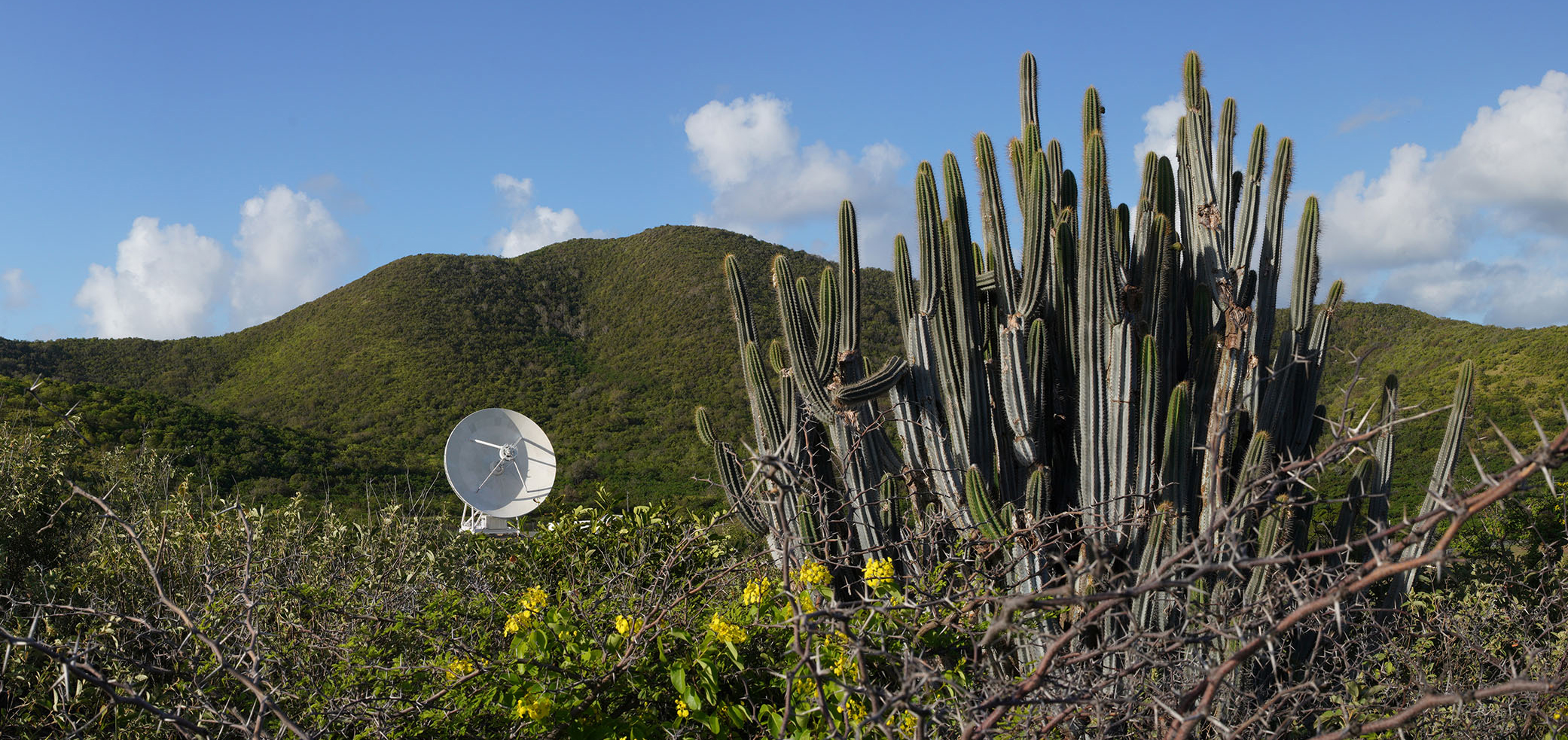When the morning sun rises over the lands of the United States, it rises first over St. Croix. Located within the Virgin Islands, St. Croix is the easternmost U.S. territory. Originally inhabited by the Igneri and Taino peoples of the indigenous Caribbeans, it was colonized by the Dutch in the 1600s. Over the centuries control of the island passed between several colonial powers before becoming a United States territory in 1917.
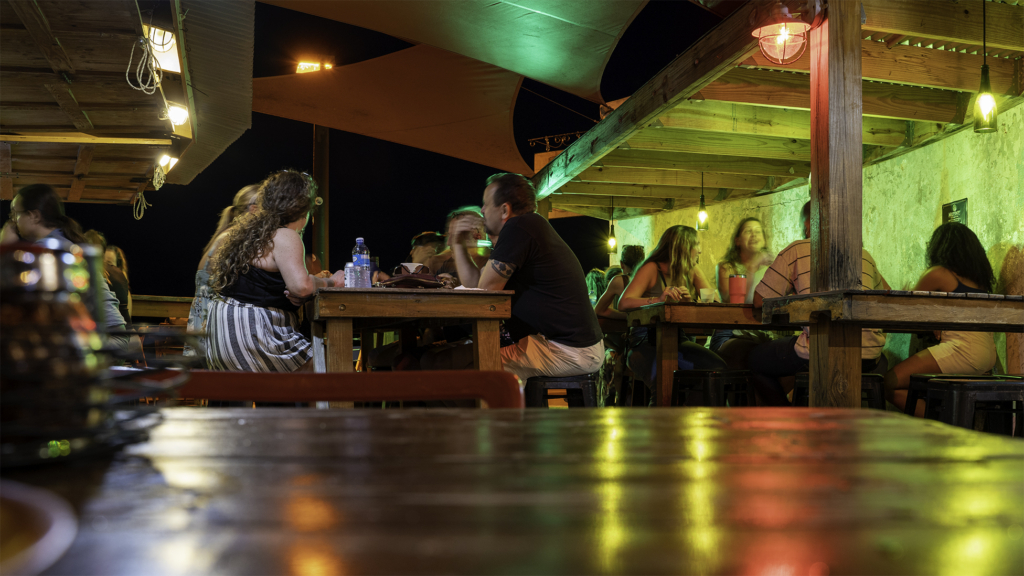
Once an agricultural power in the islands, it is now a popular tourist destination. It has a rich culture with a unique island flair. Within the main city of Christiansted, Spanish, Arabic, and Virgin Island Creole can be heard, scattered among the predominant English dialect. From the old but brightly painted buildings at the center of Christiansted to its modern storefronts, the town is a wonderful mix of past and present.
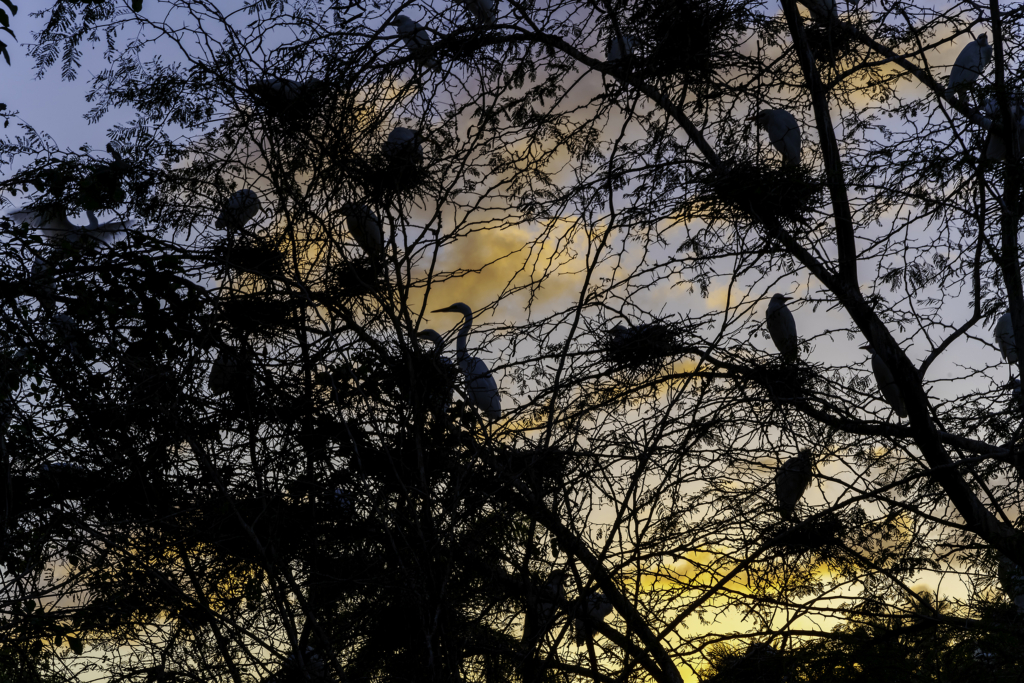
St. Croix is rich with wildlife, often as relaxed as the tourists around them. The outdoor tables of seaside restaurants are visited by iguanas, colorful birds, and even mother hens with their brood. As with its people, much of the island fauna can trace its origin from faraway lands, brought to the island by colonists and traders. With its warm days and cool nights, it’s easy to call the island home.
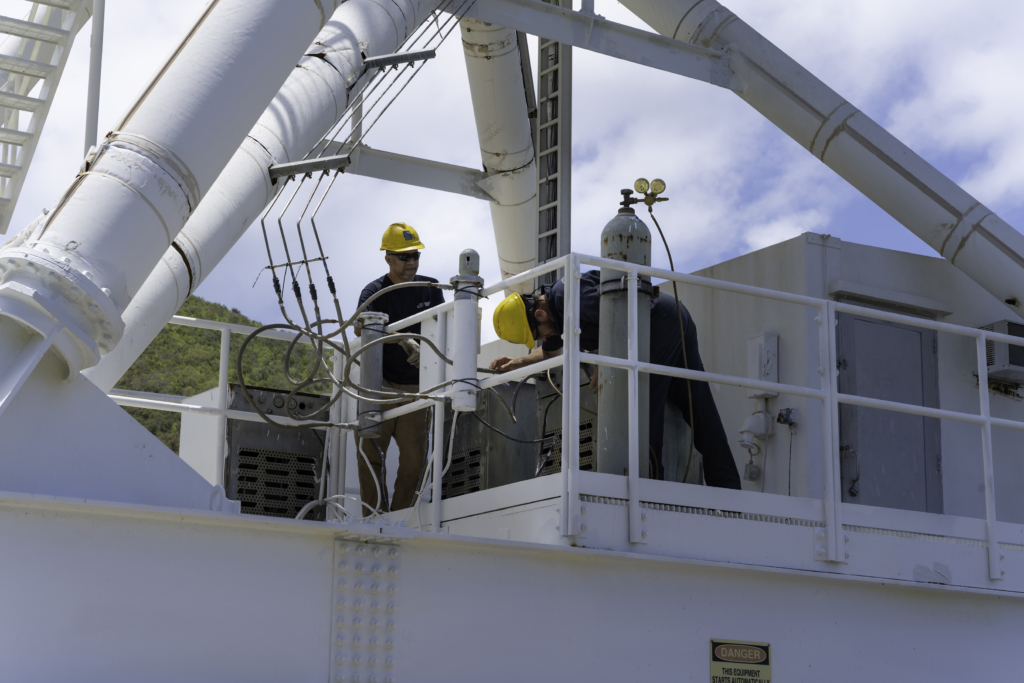
Because St. Croix marks the easternmost territory of America, it is a perfect location for an antenna of the Very Long Baseline Array (VLBA). The purpose of the VLBA is to observe the radio sky at an extremely high resolution. High enough that it can pinpoint the locations of distant quasars and use them to measure the Earth’s rotation, and even the geological drift of continents. To achieve such precise measurements, the VLBA requires an array of antennas spread as far apart as possible. It currently consists of ten antennas located on the big island of Hawaii, various locations across the continental U.S., and St. Croix. Thanks to St. Croix, the VLBA can achieve a baseline of nearly 9,000 kilometers, giving it the highest resolution of any single radio observatory.
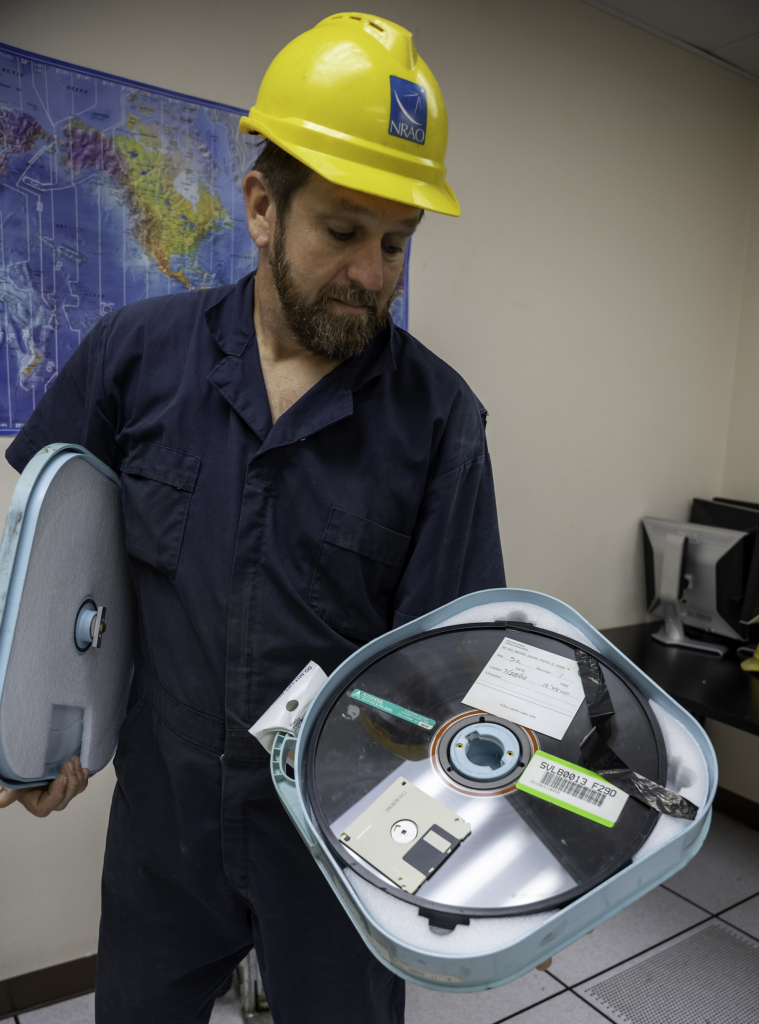
Although the location of St. Croix is perfect for a VLBA antenna, the island poses significant challenges for using and maintaining a radio antenna. The St. Croix dish is located on the eastern side of the island, almost at sea level. So it is constantly bombarded by salt air, ocean rains, and even the occasional tropical storm. The tropical ocean climate is terribly hard on a radio telescope, so the maintenance crew must work hard to protect it from rust and mechanical stress. Data gathered by the antenna must be gathered on data drives and shipped back to the Very Large Array in New Mexico to be processed.
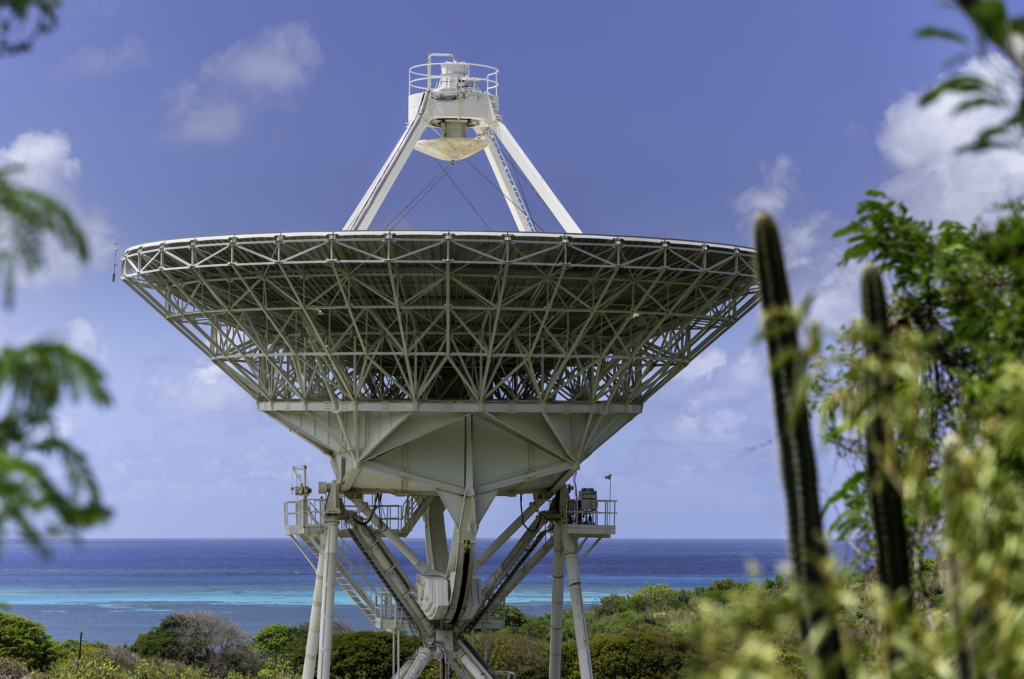
But one thing the St. Croix antenna has on all the others is the view. Nowhere else does a VLBA dish have an ocean beach view. Nested within the green hills of the eastern shore, the white dish gleams against a brilliant blue sky. It calls St. Croix its home, and if you are lucky enough to visit St. Croix, you’ll understand why.
Extra: Check out this panoramic view of the St. Croix antenna!






